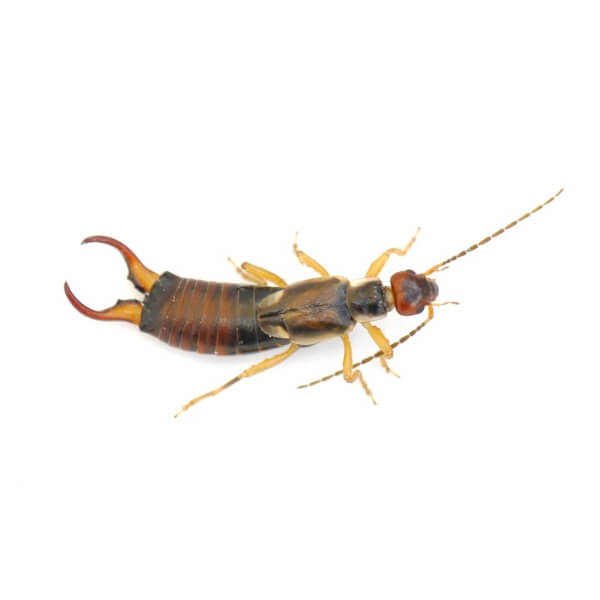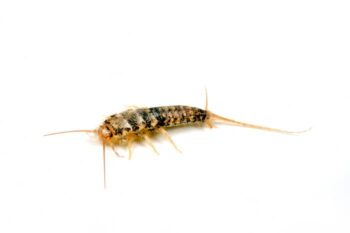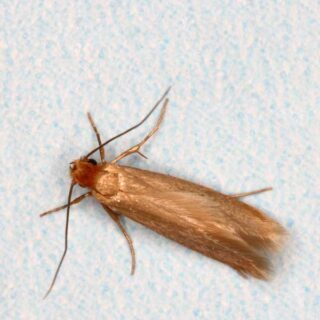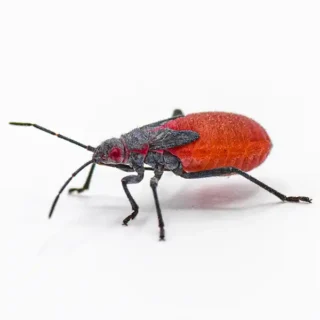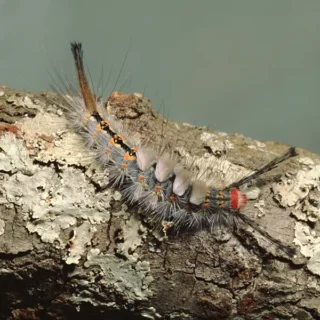Identifying Earwigs In Florida
Earwigs are small, elongated insects that can be unsettling to spot, but they are generally harmless to humans. Earwigs are found in warm, humid climates, making them a common insect found in Florida.
Earwigs up close typically have a slender, elongated body that ranges from about ¼ to 1 inch long. Their shape is somewhat flattened, which helps them fit into narrow crevices. Most earwigs are brown to dark brown, with a shiny, smooth surface – though you may also find some white earwigs too. Some may have a reddish tint, but they are generally not brightly colored.
Earwigs owe their name to the superstition that they purposely crawl into the ears of sleeping people and bore into the brain. Even though earwigs prefer moist, dark places, they choose these places for daytime hiding, not at night when people are sleeping. Earwigs are mostly nocturnal, searching for and feeding on a wide variety of insects and plants after dark.
They are more common in the southern and southwestern United States and tend to hibernate during the winter months. Earwigs may seek refuge in homes when conditions outside are too dry, hot, or cold.
Where In Florida Do Earwigs Live?
Earwigs are prevalent throughout Florida, thriving in the state’s warm and humid climate.
The diet of earwigs consists of a wide variety of plant and animal matter, making gardens and landscaped areas the ideal habitat for these insects. Earwigs feed on leaves, flowers, fruits, and fungi, as well as on aphids and larger insects such as flies, captured with their pincer-like cerci.
Day-time hiding places include under logs, rocks, boards, or dense growth of vines or weeds. Around homes, they can be found in moisture-rich environments such as cracks near swimming pool areas, flower bed mulch, underneath outdoor potted plants, and leaf litter. Inside homes, they will congregate in flaps of cardboard boxes and inside kitchens and bathrooms.
How Common Are Earwigs In Florida?
Earwigs are quite common in Florida, particularly due to the state’s warm and humid climate, which provides ideal conditions for their growth and reproduction.
These insects thrive in various environments, including gardens, landscaped areas, and even within homes. Their prevalence increases during the warmer months, especially in late spring and summer, when temperatures and humidity levels rise.
Florida’s climate and abundant vegetation also contribute to a robust earwig population, making them a common sight for residents throughout the state.
Are Earwigs Dangerous?
Earwigs are generally not considered dangerous to humans or pets. Earwigs don’t bite people or spread disease, but they can pinch. Although their pincers are not likely to break the skin, a pinch from an earwig can hurt.
For the most part, earwigs are considered a nuisance pest during spring and summer. In gardens, they can chew irregular holes in leaves and flower blossoms.
Earwigs can enter homes through gaps and cracks of siding and foundations. They can also gain access when homeowners transfer items like potted plants, firewood, or cardboard boxes from outside to inside the home.
If you are dealing with excess earwigs on your property, contact a local pest control professional Bug Out. We help manage insect control in your home!
Need help with Earwig control?
Leave your information below and we’ll be in touch with a FREE quote!
"*" indicates required fields
*During normal business hours. After hours calls will be returned the next business day.
FAQs
How Do You Get Rid Of Earwigs In Florida?
Focus on reducing moisture and removing organic debris that attracts them. Fix leaks, use dehumidifiers, and seal entry points around your home to prevent them from coming inside.
Clearing away mulch, leaf litter, and decaying plant matter from your garden can also help minimize their habitat. Setting traps, such as rolled-up newspapers, can catch earwigs effectively. Utilizing natural deterrents like diatomaceous earth or essential oils can further help keep them at bay.
For a thorough and highly effective way to manage an earwig infestation, contact your local pest control experts.
Is It Bad To See Earwigs In Your House?
Unless you’re dealing with a full-fledged infestation, seeing a few earwigs in your house isn’t a bad thing. These insects don’t pose health risks and are mostly a harmless nuisance. Keeping your home clean and addressing any moisture issues can help prevent these pests from becoming a recurring problem.
Should You Kill Earwigs?
While harmless, earwigs can become a nuisance if they invade your home or garden, particularly if they damage plants. If you’re comfortable with their presence, you may choose to relocate them outdoors instead of killing them. If their numbers become overwhelming, using traps or natural deterrents is a humane way to manage them. If the infestation is out of hand, contact your local pest professional.
What Makes Earwigs Go Away?
Focus on creating an environment that is less inviting to these insects. Reducing moisture levels is crucial, so fix leaks and use dehumidifiers in damp areas of your home. Keeping your garden tidy by removing organic debris, like mulch and fallen leaves, can eliminate their hiding spots. Sealing entry points around doors and windows can prevent new infestations. Additionally, using traps and natural repellents can encourage earwigs to go away.

